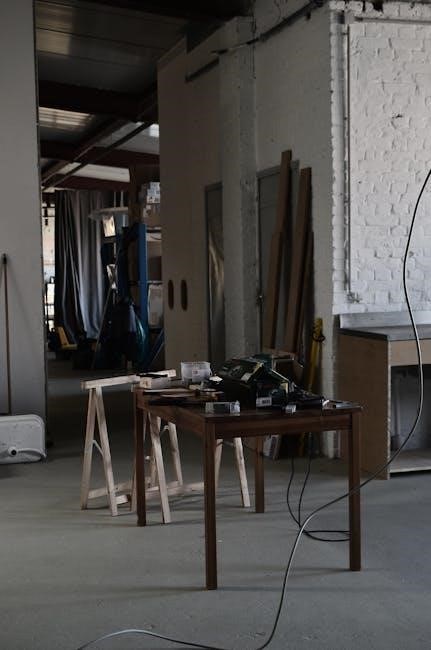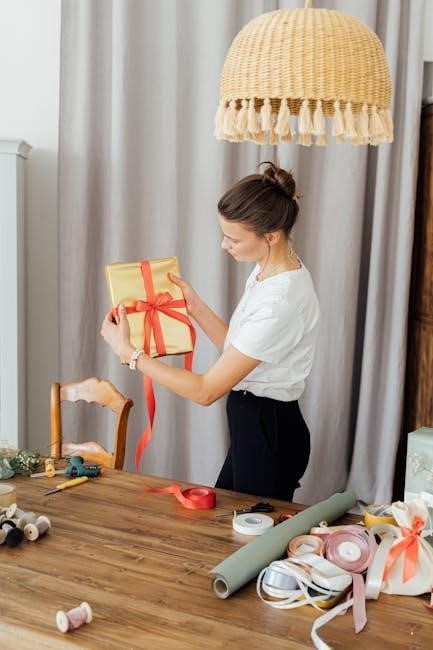Coaster Fine Furniture provides assembly instructions to ensure that customers can easily and correctly assemble their purchased furniture. These instructions typically include step-by-step guidance, diagrams, and parts lists, allowing for a smooth assembly process. Proper assembly ensures the furniture’s stability, functionality, and longevity for years to come.
Coaster Fine Furniture is a well-known brand that offers a wide range of furniture for every stage of life. Known for its stylish designs and quality craftsmanship, Coaster Furniture provides pieces for living rooms, dining rooms, bedrooms, and more. Each piece is designed with both aesthetics and functionality in mind, ensuring it enhances any living space.
Assembling Coaster Fine Furniture requires careful attention to the provided instructions. These assembly instructions are designed to guide customers through the process, step by step, ensuring that even those with limited experience can successfully put their furniture together. The instructions typically include a detailed parts list, clear diagrams, and sequential steps to follow.
Before beginning the assembly process, it’s essential to review all the included materials. This includes identifying all the parts and hardware, ensuring that nothing is missing. Familiarizing yourself with the instructions beforehand will save time and prevent frustration during the assembly process. Following the instructions closely will help ensure that your Coaster Fine Furniture is assembled correctly, providing years of enjoyment and use in your home.
General Assembly Tips for Coaster Furniture
Assembling Coaster Furniture can be a straightforward process if you follow some essential tips. First, always start by carefully unpacking all the components and hardware. Take the time to sort the hardware by size and type, as this will save time later. Use a well-lit and spacious area for the assembly to ensure you have enough room to work comfortably.
Before you begin, thoroughly read the assembly instructions. Familiarize yourself with the diagrams and the sequence of steps. It’s often helpful to lay out all the parts in the order they will be used. When tightening screws or bolts, avoid overtightening, as this can damage the furniture. Use the appropriate tools, such as a screwdriver or Allen wrench, as specified in the instructions.
If you encounter any difficulties, don’t force anything. Double-check the instructions and make sure you haven’t missed a step. Sometimes, a small adjustment or a different angle can make all the difference. If you’re still struggling, consider seeking assistance from someone experienced in furniture assembly. Following these general tips will help ensure a smooth and successful assembly of your Coaster Furniture.
Hardware Identification and Sorting
Proper hardware identification and sorting is a crucial step in the successful assembly of Coaster Fine Furniture. Before you begin, carefully unpack all the hardware from the packaging. You’ll typically find a variety of screws, bolts, washers, dowels, and other fasteners. To avoid confusion, it’s essential to organize these components systematically.

Start by laying out all the hardware on a clean, flat surface. Use the parts list provided in the assembly instructions to identify each type of hardware. The parts list will usually include diagrams or descriptions to help you distinguish between different sizes and types of screws and bolts. Consider using small containers or resealable bags to keep each type of hardware separate. Label each container clearly with the corresponding part number or description from the parts list.
Taking the time to identify and sort the hardware will save you a significant amount of time during the assembly process. It will also reduce the risk of using the wrong hardware, which can damage the furniture or compromise its stability. A well-organized hardware setup ensures a smooth and efficient assembly experience for your Coaster Fine Furniture.
Checking Parts Against the Parts List
Before initiating the assembly of your Coaster Fine Furniture, it is essential to meticulously check all the components against the provided parts list. This step ensures that you have received all necessary pieces and can proceed without unexpected interruptions; Begin by unpacking all the furniture components and placing them in a clear, open space.
Next, carefully compare each physical part with the corresponding item on the parts list. Pay close attention to the shape, size, and any unique features of each component. Verify that the quantity of each part matches the quantity indicated on the list. If you find any discrepancies, such as missing or damaged parts, it is crucial to contact Coaster Fine Furniture customer support or the retailer immediately.
Do not attempt to assemble the furniture with missing or damaged parts, as this may compromise the structural integrity and overall appearance of the final product. By diligently checking the parts against the list, you can avoid potential frustrations and ensure a smooth and successful assembly process for your new Coaster Fine Furniture.
Step-by-Step Assembly Instructions
The heart of any successful Coaster Fine Furniture assembly lies in carefully following the step-by-step instructions provided. These instructions are designed to guide you through the process in a logical and easy-to-understand manner. Before you begin, ensure you have ample space and all the necessary tools readily available. Familiarize yourself with the entire set of instructions to gain an overview of the assembly process.
Each step is typically illustrated with clear diagrams that visually represent the actions you need to take. Pay close attention to the orientation of the parts and the direction of screws or bolts. Tighten fasteners gradually, avoiding over-tightening, which can damage the furniture.
Work methodically, completing each step before moving on to the next. If you encounter any difficulties or uncertainties, refer back to the diagrams and written instructions. If needed, consider contacting customer support for clarification. By diligently following the step-by-step assembly instructions, you can ensure a sturdy and aesthetically pleasing final product.
Remember, patience and attention to detail are key to a successful furniture assembly experience.
Understanding Diagrams and Illustrations
The diagrams and illustrations included within Coaster Fine Furniture assembly instructions are vital aids in the construction process. They offer a visual representation of each step, clarifying the positioning of parts and the sequence of assembly. These visual cues are especially helpful when written instructions might be ambiguous or complex.
Each diagram is designed to be self-explanatory, often using exploded views to showcase how individual components fit together. Pay close attention to the orientation of parts in the diagrams, as incorrect alignment can lead to assembly errors. The illustrations also highlight specific hardware, such as screws, bolts, or dowels, indicating where they should be inserted.
Take the time to carefully study each diagram before proceeding with the corresponding step. Use them in conjunction with the written instructions to gain a comprehensive understanding of the assembly process. If a diagram is unclear, try comparing it to the actual parts to visualize how they connect.
Remember, the diagrams are there to simplify the assembly, so don’t hesitate to rely on them. By effectively interpreting the diagrams and illustrations, you can minimize errors and ensure a smooth and successful furniture assembly.
Safety Warnings and Precautions
Coaster Fine Furniture assembly involves certain risks, making it crucial to adhere to all safety warnings and precautions outlined in the instructions. Before starting, ensure you have ample workspace, free from obstructions and hazards. Wear appropriate safety gear, such as gloves and eye protection, to prevent injuries from sharp edges or small parts.
Always use the recommended tools and avoid forcing components together, as this can lead to damage or personal harm. Be mindful of pinch points and moving parts during assembly. If lifting heavy items, seek assistance to prevent strains or falls. Keep children and pets away from the assembly area to avoid accidents.
Inspect all parts for defects before starting, and do not attempt to assemble damaged components. In such cases, contact customer support for replacements. Never modify the furniture or use non-approved parts, as this can compromise its structural integrity and safety.
Once assembled, ensure the furniture is stable and level before use. Periodically check for loose screws or bolts and tighten them as needed. By following these safety guidelines, you can minimize the risk of accidents and enjoy your Coaster Fine Furniture safely and responsibly.
Troubleshooting Common Assembly Issues
Even with detailed instructions, assembling Coaster Fine Furniture can sometimes present challenges. One common issue is missing hardware. Before beginning, carefully inventory all parts against the provided list. If anything is missing, contact customer support immediately for replacements.
Another frequent problem is difficulty aligning parts. Ensure you are following the assembly steps in the correct order and that all components are oriented as shown in the diagrams. Loosely attach all screws or bolts before tightening them fully, allowing for adjustments as you proceed.

Stripped screws or damaged threads can also hinder assembly. Avoid overtightening screws and use the appropriate screwdriver size. If a screw strips, try using a rubber band or steel wool to improve grip. For damaged threads, consider using a thread repair kit or contacting customer support for replacement parts.
If you encounter misaligned holes, double-check that you are using the correct parts and orientations. Sometimes, slightly loosening adjacent connections can provide enough play to align the holes properly. If the issue persists, contact customer support for assistance.

Finally, if you are unsure about any step or encounter unexpected difficulties, consult the assembly instructions again or seek help from customer support. Don’t force anything, as this can lead to further damage or injury.
Contacting Customer Support for Assistance
Coaster Fine Furniture provides multiple avenues for customers to seek assistance when facing challenges during the assembly process. If you encounter missing parts, damaged components, or confusing instructions, reaching out to customer support is highly recommended.
One of the quickest ways to get help is by visiting the Coaster Fine Furniture website. Many furniture companies offer online chat or email support, allowing you to describe your issue and receive prompt guidance from a support representative. Be sure to have your furniture model number and purchase details ready.
Alternatively, you can contact customer support via phone. The phone number is typically listed on the assembly instructions or the company website. When calling, clearly explain the problem you are facing and provide any relevant information, such as part numbers or step numbers.
If you purchased your Coaster Fine Furniture from a retailer, you may also contact their customer service department for assistance. They may be able to provide guidance or facilitate communication with Coaster Fine Furniture.
Before contacting customer support, gather all necessary information and photos of the issue. This will enable the support team to understand the problem quickly and provide the most effective solution.
Care and Maintenance of Assembled Furniture
Once your Coaster Fine Furniture is successfully assembled, proper care and maintenance are essential to preserving its appearance and extending its lifespan. Different types of furniture materials require specific care routines to prevent damage and maintain their original beauty.
For wooden furniture, regular dusting with a soft cloth is crucial to remove dirt and debris. Avoid using harsh chemicals or abrasive cleaners, as they can scratch or discolor the finish. Occasional polishing with a furniture polish designed for wood can help protect the surface and enhance its shine. Be sure to wipe up spills immediately to prevent stains or water damage.
Upholstered furniture requires regular vacuuming to remove dust and crumbs. Spot clean stains promptly with a mild detergent and water. Avoid using excessive amounts of liquid, as it can soak into the fabric and cause damage. Professional cleaning may be necessary for stubborn stains or overall cleaning.
Metal furniture should be cleaned with a damp cloth and mild soap. Avoid using abrasive cleaners, as they can scratch the surface. Protect metal furniture from rust by applying a rust inhibitor or sealant.
By following these care and maintenance tips, you can ensure that your assembled Coaster Fine Furniture remains in excellent condition for years to come.
Disposal of Packaging Materials
After successfully assembling your Coaster Fine Furniture, you’ll be left with packaging materials such as cardboard boxes, plastic wrap, foam inserts, and packing peanuts. Proper disposal of these materials is important for environmental responsibility and reducing waste. Before disposing of any packaging, check with your local recycling center or waste management services to determine the best options for recycling in your area.
Cardboard boxes can typically be flattened and recycled. Remove any tape or labels before placing them in the recycling bin. Plastic wrap and foam inserts may or may not be recyclable, depending on your local regulations. Check the packaging for recycling symbols or contact your local recycling center for guidance.
Packing peanuts are often made of polystyrene, which is not always recyclable. Some shipping stores may accept packing peanuts for reuse. Alternatively, you can check with local schools, community centers, or non-profit organizations to see if they can use the packing peanuts for their packing needs.

If recycling options are limited, consider reusing the packaging materials for storage, shipping, or other purposes. By responsibly disposing of or reusing packaging materials, you can help minimize waste and protect the environment.

Be First to Comment